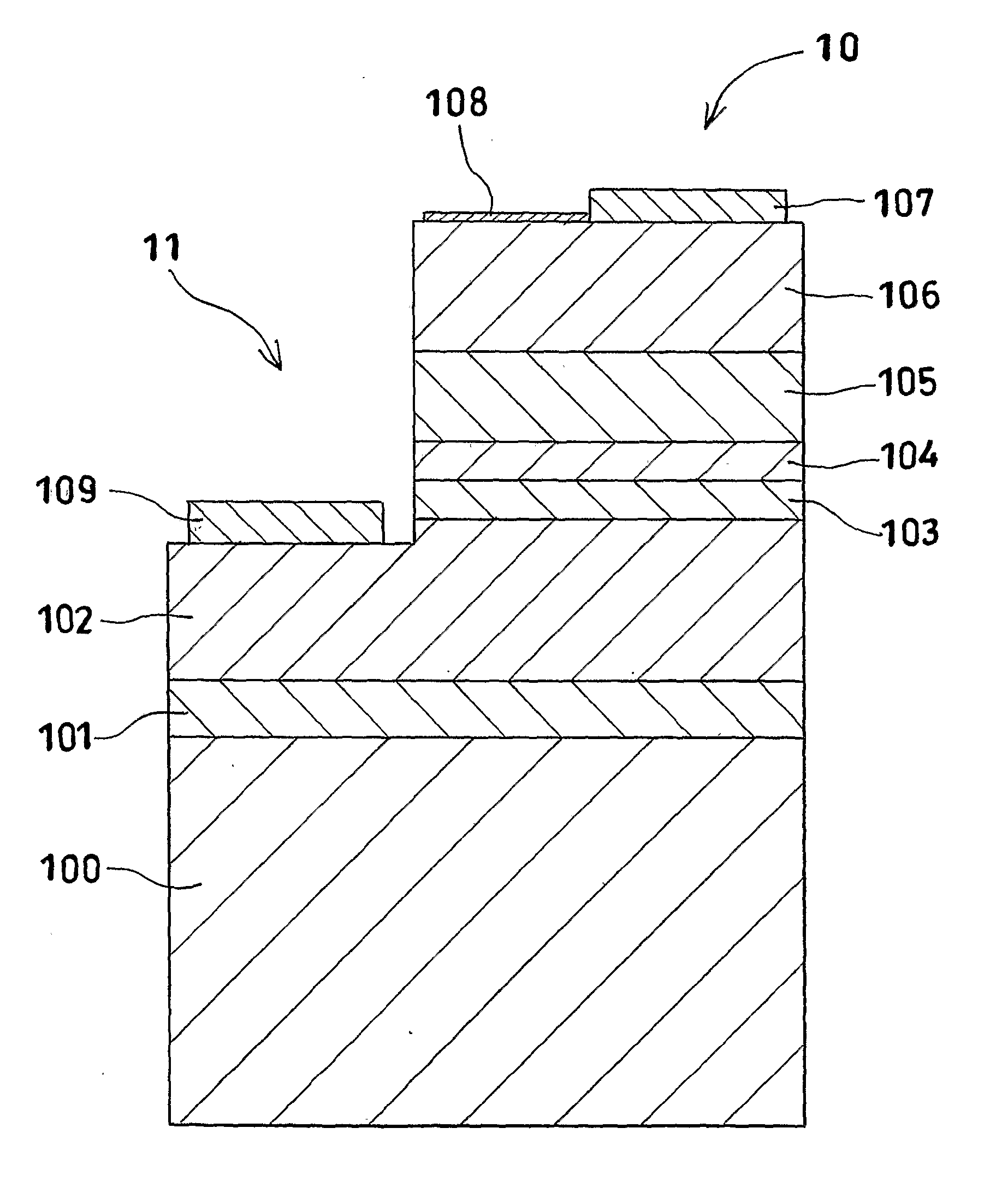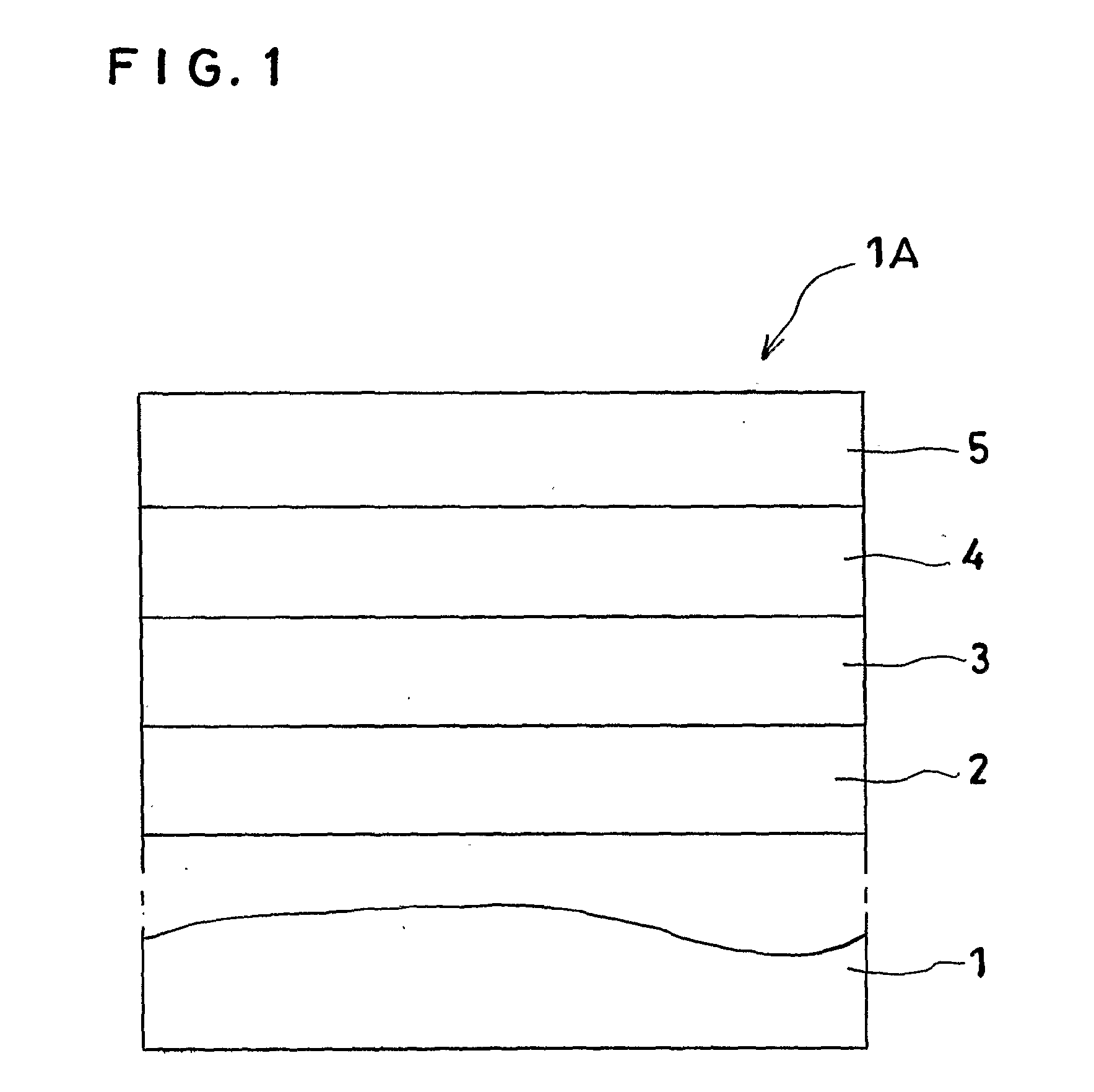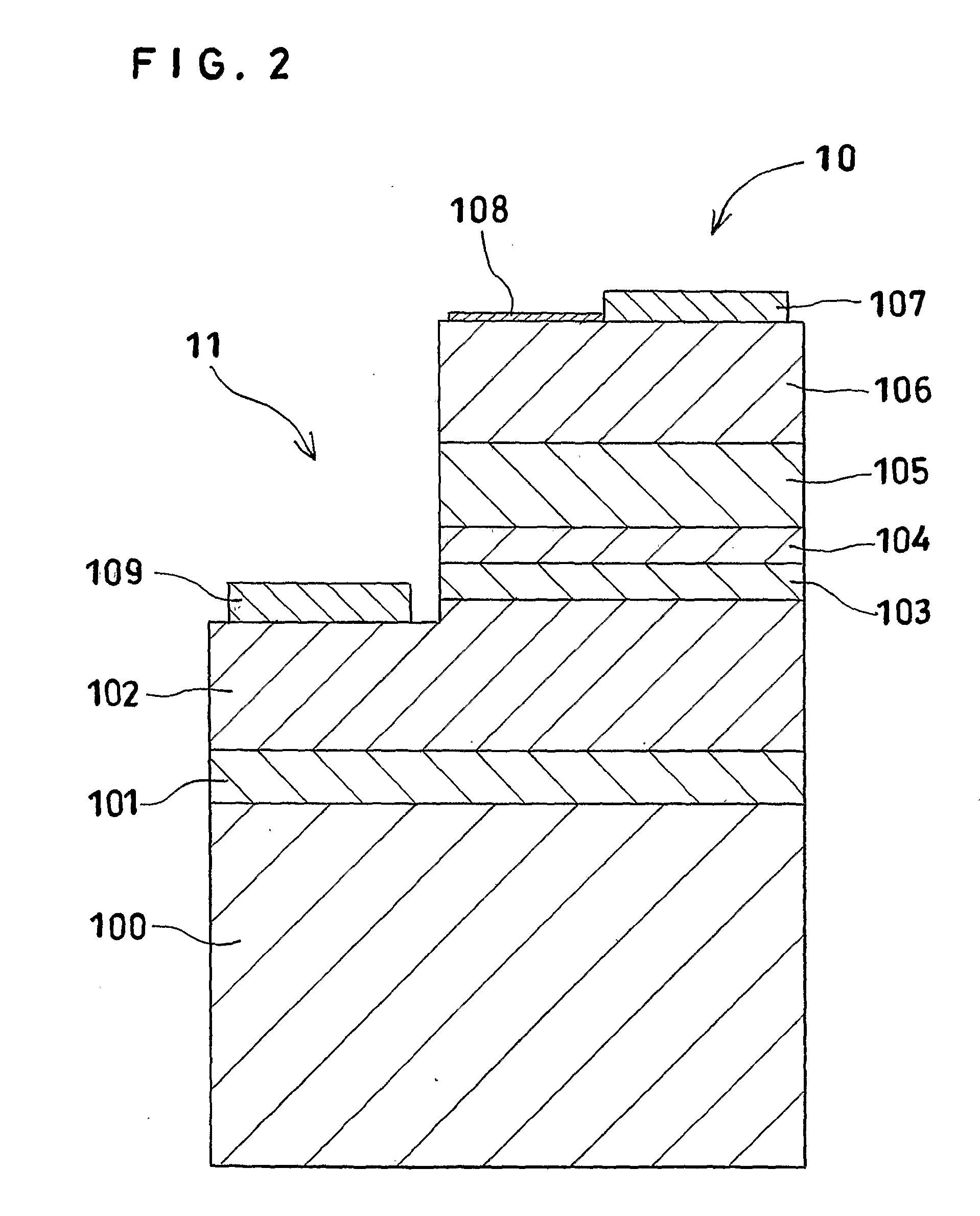P-N Junction-Type Compound Semiconductor Light-Emitting Diode
- Summary
- Abstract
- Description
- Claims
- Application Information
AI Technical Summary
Benefits of technology
Problems solved by technology
Method used
Image
Examples
example
[0039] This invention will be specifically described below by citing as an example the case of fabricating a p-n junction-type compound semiconductor LED utilizing a monomeric boron phosphide semiconductor layer formed on a p-type gallium nitride (GaN) layer.
[0040]FIG. 2 schematically shows the cross-sectional view of a stacked structure 11 used for the fabrication of an LED 10 of a double hetero (DH) junction structure. FIG. 3 illustrates a schematic plan view of the LED 10.
[0041] The stacked structure 11 was formed by stacking on a (0001)-sapphire (α-Al2O3 single crystal) substrate 100, an undoped buffer layer 101 formed of GaN, a lower clad layer 102 formed of silicon (Si)-doped n-type GaN (n=7×1018 cm−3, layer thickness (t)=3 μm), a light-emitting layer 103 containing an undoped n-type Ga0.86In0.14N layer, an upper clad layer (Group III nitride semiconductor layer) 104 formed of Mg-doped p-type Al0.06Ga0.94N (p=3×1017 cm−3, t=0.08 μm), and a p-type layer (Group III nitride sem...
PUM
 Login to View More
Login to View More Abstract
Description
Claims
Application Information
 Login to View More
Login to View More - R&D
- Intellectual Property
- Life Sciences
- Materials
- Tech Scout
- Unparalleled Data Quality
- Higher Quality Content
- 60% Fewer Hallucinations
Browse by: Latest US Patents, China's latest patents, Technical Efficacy Thesaurus, Application Domain, Technology Topic, Popular Technical Reports.
© 2025 PatSnap. All rights reserved.Legal|Privacy policy|Modern Slavery Act Transparency Statement|Sitemap|About US| Contact US: help@patsnap.com



